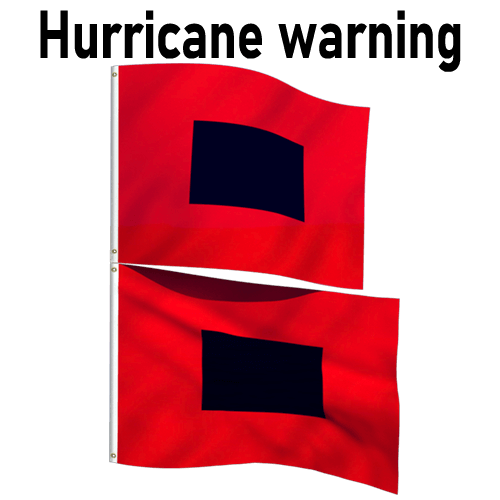Special Marine Warning explained

A Marine Warning is an official alert issued by meteorological and maritime authorities—such as the U.S. National Weather Service (NWS), Environment and Climate Change Canada (ECCC), or other national agencies—to warn boaters, sailors, and coastal communities of hazardous conditions on the water. These warnings are vital for maritime safety because they provide timely information about severe weather or sea states that could threaten vessels, ports, or coastal operations. Below is an in-depth explanation of what Marine Warnings are, how they work, and what mariners should do when one is issued.
1. Purpose of Marine Warnings
The main purpose of a Marine Warning is to protect life and property at sea or in coastal waters. Marine environments can change quickly—winds can increase, visibility can drop, and waves can become dangerously high in a matter of minutes. Since many marine activities (boating, fishing, transport, recreation) depend on stable weather, an early warning allows mariners to:
-
Seek safe harbor before conditions worsen.
-
Adjust routes to avoid the area of danger.
-
Secure vessels and equipment at ports or marinas.
-
Alert crew members and passengers about safety measures.
Marine Warnings complement Marine Forecasts and Advisories, which provide general conditions and recommendations. However, a warning means that dangerous conditions are occurring or imminent.
1. Why Waterway Signs Matter
Unlike roads, waterways have no painted lines or traffic lights. Conditions can change with currents, tides, and weather, so navigational aids provide the information needed to travel safely. They help you:
-
Identify safe channels and routes.
-
Avoid underwater hazards or shallow areas.
-
Know which side to pass on.
-
Follow speed limits and restricted zones.
-
Protect swimmers, wildlife, and other boaters.
These signs are standardized across North America, following systems such as the Canadian Aids to Navigation System (ATON) and the U.S. Uniform State Waterway Marking System (USWMS).
2. Types of Marine Warnings
Different types of Marine Warnings are issued depending on the type and severity of the hazard:
a. Small Craft Warning
This is issued when sustained winds or frequent gusts make it hazardous for small boats to operate. The threshold varies by region (often 20–33 knots or about 37–61 km/h). It advises small vessels to remain in port or exercise extreme caution.


b. Gale Warning
A Gale Warning is issued when winds of 34 to 47 knots (63–87 km/h) are expected. Such conditions can produce rough seas, dangerous waves, and make steering difficult even for larger vessels.
c. Storm Warning
A Storm Warning is issued when winds of 48 to 63 knots (88–117 km/h) are expected. These are serious conditions that can cause structural damage to vessels, capsize small boats, and endanger lives.


d. Hurricane or Typhoon Warning
When sustained winds exceed 64 knots (118 km/h or more) and are associated with tropical cyclones, a Hurricane (or Typhoon) Warning is issued. These warnings cover both wind and wave threats and often involve coastal evacuation orders.
3. How Marine Warnings Are Communicated
Marine Warnings are disseminated through several channels to ensure that mariners receive them promptly:
-
VHF Marine Radio: Weather alerts are broadcast on channels such as VHF Channel 16 (distress and calling) and WX channels for continuous weather broadcasts.
-
NAVTEX and GMDSS Systems: Used on larger vessels for automatic text-based weather alerts.
-
Online and Mobile Apps: Websites like the National Weather Service Marine Forecasts, Environment Canada Marine Weather, or apps like Windy, Navionics, and NOAA Weather Radar deliver warnings in real time.
-
Broadcast Media: Radio and television stations in coastal regions often repeat marine alerts.
-
Maritime Authorities and Coast Guards: May relay or enforce warnings, advising or restricting navigation in affected zones.
In the U.S., Marine Warnings are part of the NOAA Weather Radio All Hazards network, which automatically issues alerts with specific location codes (e.g., for particular coastal or offshore zones).
4. What Mariners Should Do During a Marine Warning
When a Marine Warning is issued, mariners should act immediately depending on their location and vessel type:
-
If in port or marina: Delay departure and ensure all lines, fenders, and covers are secured.
-
If offshore: Determine whether it is safer to return to shore or seek shelter behind landforms or inlets.
-
If already in open waters: Reduce speed, secure loose items, and have everyone wear personal flotation devices (PFDs).
-
Monitor updates: Continue listening to VHF radio or checking radar and weather apps for updates.
-
Avoid panic: Follow your pre-planned emergency procedures—knowledge and calmness save lives.
For professional vessels, captains must log weather warnings, inform crew, and adjust navigation plans to comply with maritime safety rules.
5. Duration and Coverage Areas
Marine Warnings typically apply to specific Marine Zones, which are designated sections of coastal and offshore waters. For example, a warning might read:
“Special Marine Warning for the coastal waters from Cape Cod to Nantucket, valid until 8:30 p.m. EST.”
The duration of a warning depends on the event:
-
Special Marine Warnings: Usually less than 2 hours.
-
Gale and Storm Warnings: 6–24 hours.
-
Hurricane Warnings: Up to 36 hours in advance.
Authorities may update, extend, or cancel warnings as new data become available.
6. Importance of Paying Attention to Marine Warnings
Ignoring a Marine Warning is one of the most common causes of preventable maritime accidents. The open water offers no protection from wind, waves, or lightning, and conditions can deteriorate faster than expected. Many fatal incidents occur because small-boat operators underestimate warnings or misinterpret “advisory” versus “warning.”
Mariners should:
-
Regularly check marine forecasts before departure.
-
Learn to interpret marine warning terminology.
-
Carry reliable communication equipment (VHF radio, EPIRB).
-
Create an emergency plan for sudden weather changes.